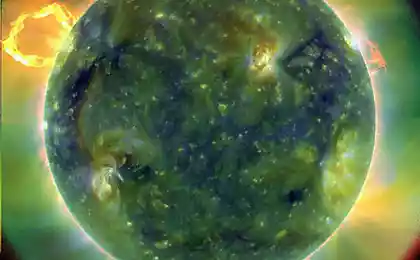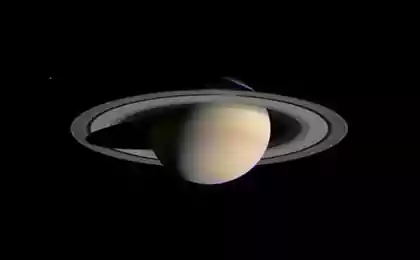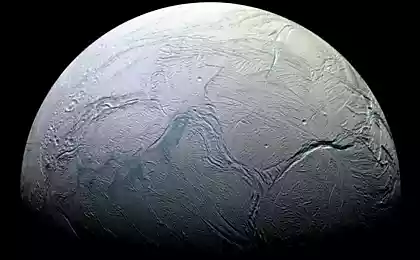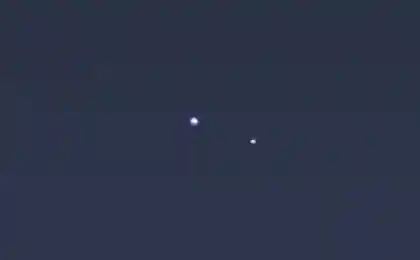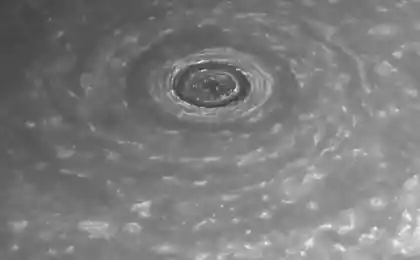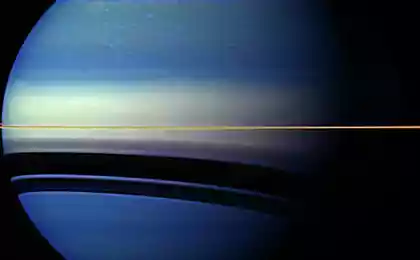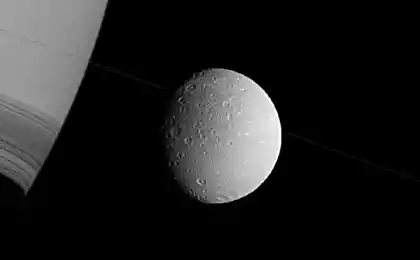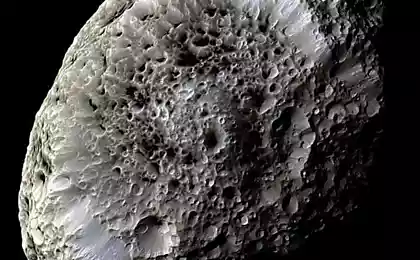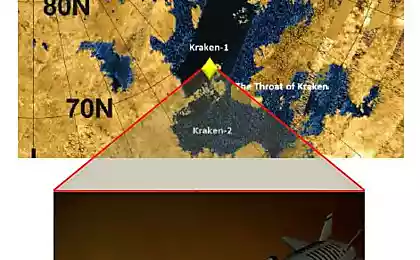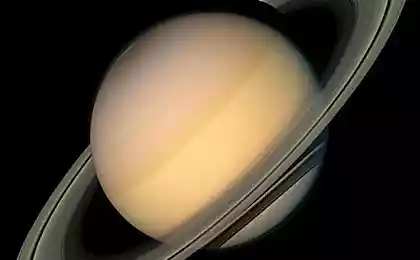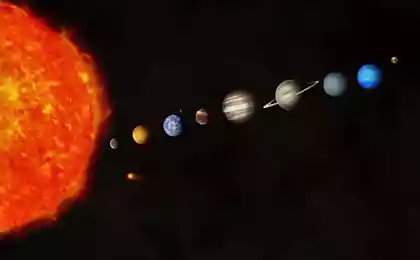426
Cassini found the atmosphere.
Scientists led by Ben Teolisa (Ben Teolis) from Southwest Research University (Southwest Research Institute), the United States, discovered that Rhea - the second largest moon of Saturn - the atmosphere consisting of oxygen and carbon dioxide. This informs BBC News. According to the researchers, it is extremely thin. For example, the oxygen content therein is 5 trillion times smaller than the Earth's atmosphere.
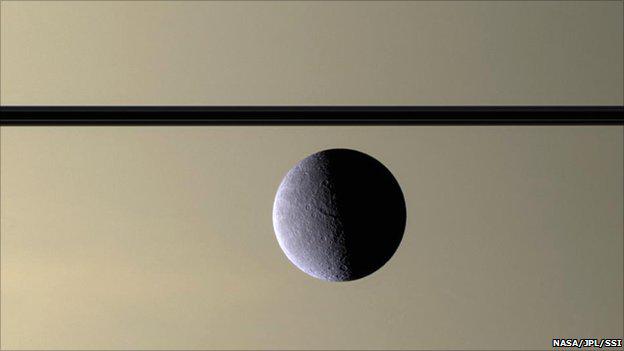
Exosphere as it would be more correct to call it, has been detected by spacecraft "Cassini» (Cassini). Prior to that, the exosphere were found in two of Jupiter's moons - Europa and Ganymede.
"As the rotation of the magnetic field around Saturn particles in it, falling on the surface of Rhea. They fall to the surface and destroy the water molecules because of their high temperature. Then rearrange the atoms in a molecule of oxygen, which rise above the surface due to the other particles, "- said Ben Teolis.
The mechanism of formation of carbon dioxide is less obvious. Some of the carbon dioxide molecules can occur as a result of exposure to the active particles. This is possible only when there is ice on the moon's surface covered with organic compounds. There is also the possibility that the carbon dioxide formed as a result of the processes inside the planet and gradually leaks out.
Previous attempts to find the atmosphere at Rhea failed. Only approximately "Cassini" to the satellite made the discovery possible. "With the" Cassini "was able to penetrate through the atmosphere, and we were able to measure, as they say on the site," - said Andrew Coates (Andrew Coates), a professor of laboratory space research Mullarda University College London (Mullard Space Science Laboratory), UK.
"Our guess is that such exosphere are fairly common. There are satellites of Saturn and Uranus, which are large enough to have an atmosphere. And such things can be repeated in the universe billions of times, but not be limited only to any particular region, "- commented on the results of research Ben Teolis.
The US space agency (NASA) has extended the mission of "Cassini" until 2017. Recall that the "Cassini-Huygens» (Cassini-Huygens), a joint project of NASA, ESA and the Italian Space Agency, was launched in October 1997. The main objective of the unit is to study Saturn, its rings and many moons. Coming into orbit around Saturn in 2004, the probe "Huygens" separated from the "Cassini" and entered the atmosphere of Titan, the largest satellite of the planet. In 2008, when the machine was supposed to complete its work, its mission was extended to September 2010. Thus, the "Cassini" was able to convey to Earth images of Saturn and its rings during the solstice in August 2009. For six years the unit has made more than 210 thous. Of images made 125 overflights around Saturn, 67 times approached Titan and 8 times - to Enceladus.
Source:

Exosphere as it would be more correct to call it, has been detected by spacecraft "Cassini» (Cassini). Prior to that, the exosphere were found in two of Jupiter's moons - Europa and Ganymede.
"As the rotation of the magnetic field around Saturn particles in it, falling on the surface of Rhea. They fall to the surface and destroy the water molecules because of their high temperature. Then rearrange the atoms in a molecule of oxygen, which rise above the surface due to the other particles, "- said Ben Teolis.
The mechanism of formation of carbon dioxide is less obvious. Some of the carbon dioxide molecules can occur as a result of exposure to the active particles. This is possible only when there is ice on the moon's surface covered with organic compounds. There is also the possibility that the carbon dioxide formed as a result of the processes inside the planet and gradually leaks out.
Previous attempts to find the atmosphere at Rhea failed. Only approximately "Cassini" to the satellite made the discovery possible. "With the" Cassini "was able to penetrate through the atmosphere, and we were able to measure, as they say on the site," - said Andrew Coates (Andrew Coates), a professor of laboratory space research Mullarda University College London (Mullard Space Science Laboratory), UK.
"Our guess is that such exosphere are fairly common. There are satellites of Saturn and Uranus, which are large enough to have an atmosphere. And such things can be repeated in the universe billions of times, but not be limited only to any particular region, "- commented on the results of research Ben Teolis.
The US space agency (NASA) has extended the mission of "Cassini" until 2017. Recall that the "Cassini-Huygens» (Cassini-Huygens), a joint project of NASA, ESA and the Italian Space Agency, was launched in October 1997. The main objective of the unit is to study Saturn, its rings and many moons. Coming into orbit around Saturn in 2004, the probe "Huygens" separated from the "Cassini" and entered the atmosphere of Titan, the largest satellite of the planet. In 2008, when the machine was supposed to complete its work, its mission was extended to September 2010. Thus, the "Cassini" was able to convey to Earth images of Saturn and its rings during the solstice in August 2009. For six years the unit has made more than 210 thous. Of images made 125 overflights around Saturn, 67 times approached Titan and 8 times - to Enceladus.
Source:

